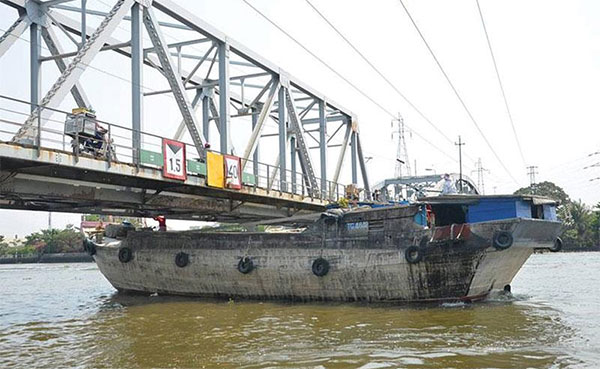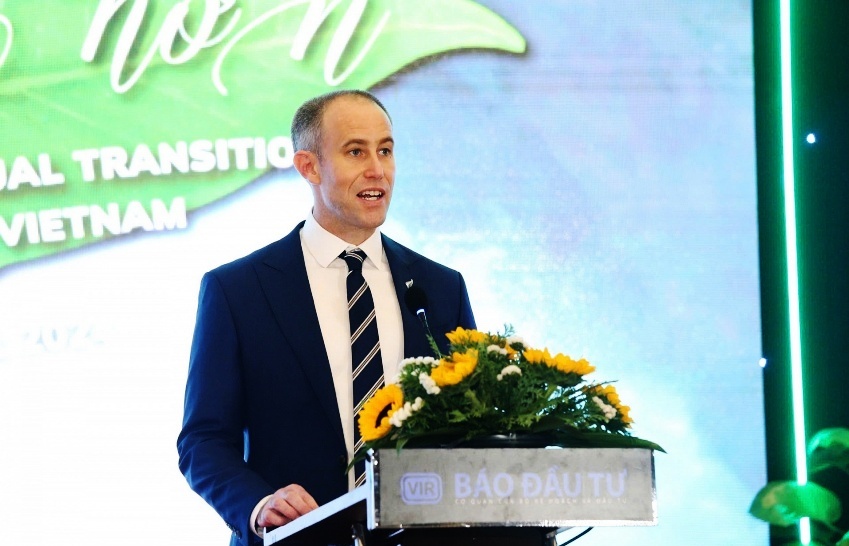Shining some light on delayed infrastructure works in second city
 |
Starting work from April, 2015 with a total investment capital exceeding VND1.3 trillion ($59.7 million), the build-operate-transfer (BOT) project to build a new Binh Loi railway bridge crossing Binh Thanh-Thu Duc districts, replacing the old one which is over 100 years old, has seen no progress made.
After repeated warnings, the developer- Green Urban Investment and Development JSC and STD Construction and Investment JSC- promised to continue the project in October 2015. To date, no progress has been made, even though concerns remain that the old bridge could collapse at anytime.
Another BOT project, developed by Ho Chi Minh City Infrastructure Investment JSC (CII) to expand a 15.7km section of Hanoi Highway, an arterial route heading Ho Chi Minh City centre and Cat Lai port, is in a similar situation.
Despite holding its ground breaking ceremony six years ago, the project has yet to begin construction. With such a delay, the initial total investment cost of VND2.28 trillion ($104 million) faces a cost overrun threat.
The work starting ceremony of another project to build a 2.7km road linking Pham Van Dong road and the Go Dua bridge in Thu Duc district took place in early December 2015, but no further progress has been made.
The project, developed by a consortium consisted of HNS Vietnam Investment JSC and Van Phu Investment JSC and Bac Ai Investment and Construction Consulting JSC, reports VND1.13 trillion ($52 million) in total investment capital for phase 1 construction (not including land acquisition cost) and will go under a build-transfer (BT) format.
The projects’ delay was mainly attributed to difficulties in site clearance and compensation. In some cases, construction occurs parallel to site clearance.
For instance, regarding the project to build the road connecting Pham Van Dong street and Go Dua bridge, the developer is currently still involved in negotiations regarding compensation costs with the local residents.
Regarding the project to build the new Binh Loi railway bridge, the cause of delay, according to the city’s Department of Transport, involved site clearance impediments.
Another delayed project, the $100 million-plus scheme to build an underground parking area beneath Le Van Tam Park, the holdup was caused by a design change to the fire prevention and cure system to meet new regulations, according to Le Tuan, general director of Underground Space Investment Development Corporation (IUS), the project developer.
Industry experts speculated that the developers’ lack of experience was also a cause leading to project delays.
For example, the developers of the projects to build the new Binh Loi railway bridge and the Hanoi Highway expansion section were in fact operating in housing construction and so lacked experience in implementing large transport infrastructure projects.
What the stars mean:
★ Poor ★ ★ Promising ★★★ Good ★★★★ Very good ★★★★★ Exceptional
Latest News
More News
- VIR sustainable development conference opens in Hanoi (November 12, 2024 | 09:42)
- Taking the lead in dual transition for a greener Vietnam (November 11, 2024 | 17:00)
- Vietnamese consumers careful amid economic volatility (November 11, 2024 | 13:55)
- Quality must come first in chip mission (November 11, 2024 | 10:33)
- Vietnam's digital economy estimated to reach $36 billion in 2024 (November 07, 2024 | 13:52)
- Authorities looks to tackle influx of cheap foreign goods (November 07, 2024 | 10:44)
- Trump claims 'magnificent' victory over Harris (November 06, 2024 | 16:55)
- Trump on verge of victory over Harris (November 06, 2024 | 14:26)
- Hanoi unveils innovative tourism event to celebrate cultural heritage (November 06, 2024 | 13:36)
- FDI hits over $27 billion in first 10 months (November 06, 2024 | 13:24)




















 Mobile Version
Mobile Version